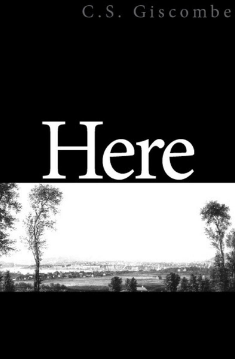'My Bad Attitude Toward the Pastoral': The Country and the City in the Poetry of C.S. Giscombe
Lecture by Chiyuma Elliott for Fall 2018 Colloquium The City and its People.
Fall 2018 GUH Colloquium student Sunya Berkelman-Rosado wrote the following reflection on the October 23rd lecture given by Chiyuma Elliott, Assistant Professor of African American Studies.
 Chiyuma Elliott, Assistant Professor of African American Studies tells us that great pieces of art teach us how to analyze them. The analysis of such art, in turn, is an important tool for social analysis. In her lecture, ‘My Bad Attitude Toward the Pastoral': The Country and the City in the Poetry of C.S. Giscombe, Elliot explores dimensions of race, place and belonging through C.S. Giscombe’s book length poem Here. Elliott demonstrates that the reading of poetics is a necessity for social analysis. She shows us the importance of metaphor (when things are not present in a literal way but rather in nuance) in illuminating the blurring of time/space and urban/rural geography.
Chiyuma Elliott, Assistant Professor of African American Studies tells us that great pieces of art teach us how to analyze them. The analysis of such art, in turn, is an important tool for social analysis. In her lecture, ‘My Bad Attitude Toward the Pastoral': The Country and the City in the Poetry of C.S. Giscombe, Elliot explores dimensions of race, place and belonging through C.S. Giscombe’s book length poem Here. Elliott demonstrates that the reading of poetics is a necessity for social analysis. She shows us the importance of metaphor (when things are not present in a literal way but rather in nuance) in illuminating the blurring of time/space and urban/rural geography.
Elliott notes that in Giscombe’s text the specter of blurring is ever present. Set on the edges of the rural south and the border of New York and Canada Here is a meditation on the blurring of borders, place and race. Likewise, the text jumps backwards and forwards in time blurring the past/present/future. Elliott highlights that the text follows a creative and emotional logic rather than a linear one. She tells us this opens up the possibility of representing the forging of selfhood and identity in a dynamic, layered, diachronic way. Elliott observes that the feelings of confusion and being unsettled lace through the text. The unpredictability of the poem belies the complexity and tension of experience where racially charged moments blend with nostalgia on the page. In terms of geography and the blurring of place, Elliott observes places “where the rural sometimes springs up the heart of the city.” This nonlinear and hybridized representation of place and experience is perhaps disorienting. It is perhaps illuminating.
Through an analysis of the poetics of Here, Elliott draws our attention to a racially inflected geography. One in which place and historical memory fuse and intertwine. Where racialized place names, the shifting edges of neighborhoods and locations as hybrids of other locations take shape. Giscombe’s poem exposes examples of what Elliott terms “an embodied regional hybridity” and complicates the question of belonging and how we know we belong. What can we learn from this analysis of poetics in service of the understanding of regional hybridity and racialized geography? Of the blurring of place, time, and race?
For me, the valuable lesson here is both that “a great piece of art teaches us how to analyze it” and that the exploration of meaning and belonging through poetics and art is a significant ethnographic tool. When memory, emotion and experience circulate in nonlinear ways it makes sense to look towards art and poetics to illuminate the nuance, the metaphor, of these experiences and conditions. This allows for a better understanding of the dimensionality of human experience and can capture more of the essence of the memory, senses and belonging of people as they shift through changing and nonlinear places and expressions of self. The use of poetics to explore the blurring of geography and the racialized experience of place helps us to better understand the ways that power and disenfranchisement circulate, and as Elliott states, the “legibility of white supremacy on the land and on the people.”



